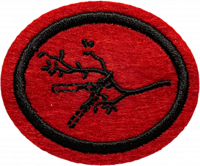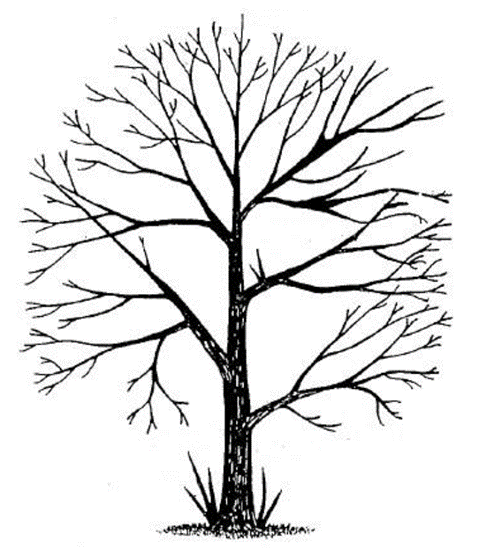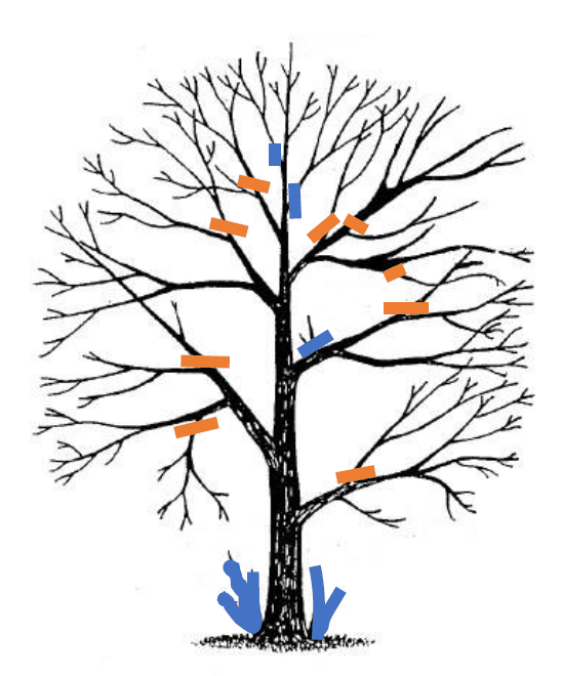Difference between revisions of "AY Honors/Arboriculture/Answer Key"
(Marked this version for translation) |
(+ some answers) |
||
| Line 205: | Line 205: | ||
</noinclude> | </noinclude> | ||
<!-- 3. Name five plant characteristics used to identify trees. --> | <!-- 3. Name five plant characteristics used to identify trees. --> | ||
| + | Leaves, form, bark, buds, twigs, leaves, flowers, fruit and scent are all characteristics that can be used to properly identify trees. | ||
<!--T:46--> | <!--T:46--> | ||
| Line 214: | Line 215: | ||
</noinclude> | </noinclude> | ||
<!-- 4. Explain the benefits of mulching and how to properly apply it around trees and shrubs. --> | <!-- 4. Explain the benefits of mulching and how to properly apply it around trees and shrubs. --> | ||
| + | Adding around trees can improve the soil and provide many positive effects to vegetation such as: reduced soil compaction and crusting, improved water infiltration, reduced soil erosion, decreased weed competition, consistent temperature regulations, soil structure improved over time and stabilized pH. | ||
<!--T:48--> | <!--T:48--> | ||
| Line 223: | Line 225: | ||
</noinclude> | </noinclude> | ||
<!-- 5. Describe the principles of water conservation and hydrozone planning. --> | <!-- 5. Describe the principles of water conservation and hydrozone planning. --> | ||
| + | The principles of water conservation are to evaluate the who, what, when, where, how and why of water source and use, and then develop a sustainable plan to manage this resource to better preserve the environment. One such way is creating a hydrozone plan for your site. A Hydrozone plan is simply grouping plants together based on their water needs, vegetation that requires low amounts of water should be grouped together to avoid over watering, and plants that require high amounts to avoid under watering. | ||
<!--T:50--> | <!--T:50--> | ||
| Line 250: | Line 253: | ||
</noinclude> | </noinclude> | ||
<!-- 8. Interview a local certified arborist or tree expert about different planting techniques used in your area. --> | <!-- 8. Interview a local certified arborist or tree expert about different planting techniques used in your area. --> | ||
| + | When planting a balled and burlap tree, the planting site should be inspected and markers placed for any underground utilities if present. Locate the ideal spot within the site's restrictions and begin excavating. The planting hole should not be deeper than the height of the root ball and is preferred to be 2-3 inches shallower; however, at least 2 times wider than the root ball in order to have room to work and stabilize the tree. Once the planting hole is complete, place the tree in the center of the hole and adjust the angle to make the tree straight from all sides; pack dirt around the base to stabilize. Once the tree has been straightened and stabilized use wire cutters and utility knives to remove the top section of the basket and burlap; once removed tease roots out the ball to avoid any girdling roots in the future. Next fill in the hole around the tree and pay special attention to avoid covering the trunk. After the tree has been planted, install additional support systems only if necessary and apply mulch around the base (remember wider is better than deeper), use mulch to create a berm ring around the edge of the mulch. Finally prune any broken branches or poor structure, do not prune more than 25% of the crown. | ||
<!--T:56--> | <!--T:56--> | ||
| Line 307: | Line 311: | ||
</noinclude> | </noinclude> | ||
<!-- 14. Research how trees can be injured or destroyed as the direct or indirect result of construction damage and present your findings to a group. --> | <!-- 14. Research how trees can be injured or destroyed as the direct or indirect result of construction damage and present your findings to a group. --> | ||
| + | Construction damage is very common in tree mortality, especially in new developments. A lot of engineers and construction workers are not well versed on the complexity of trees and their preservation. It is important for an arborist to be involved in the earliest planning stages of the project in order to help preserve high value trees. | ||
| + | |||
| + | Most construction site damage is caused by the operation of heavy machinery which can damage bark, branches, or roots. Storage of equipment and supplies can compact soil crushing or suffocating tree roots, which will eventually lead to tree mortality. Excavation and grading are also leading causes of tree injury during construction. Injuries may not kill the tree right away but may compromise the tree’s ability to fight off pests and disease due to the increase of stress from construction. | ||
<!--T:69--> | <!--T:69--> | ||
| Line 316: | Line 323: | ||
</noinclude> | </noinclude> | ||
<!-- 15. Give a presentation on the importance of Urban Forestry in your local rea or the nearest urban area in your region. Be creative. --> | <!-- 15. Give a presentation on the importance of Urban Forestry in your local rea or the nearest urban area in your region. Be creative. --> | ||
| + | Here are some topics and information to assist in writing your report: Trees can improve moods, save energy, absorb excess water, block unwanted views, reduce crime rates, increase property value, reduce heating/cooling cost and usage, purify air, manage soil erosion, provide food and shelter for wildlife, store carbon emissions, and much more. | ||
| + | |||
| + | You might also be interested in completing the [[AY Honors/Forestry|Forestry]] Honor. | ||
<!--T:71--> | <!--T:71--> | ||
| Line 325: | Line 335: | ||
</noinclude> | </noinclude> | ||
<!-- 16. Make a significant list of necessary Personal Protective Equipment (PPE) for conducting the following types of work: Urban Forestry, Arboriculture. --> | <!-- 16. Make a significant list of necessary Personal Protective Equipment (PPE) for conducting the following types of work: Urban Forestry, Arboriculture. --> | ||
| + | Urban Forestry: Hard hat, certified work boots, adequate hearing protection, certified eye protection, Hi-Vis vest. | ||
| + | |||
| + | Arboriculture: Certified chainsaw protection rated pants/chaps, gloves, boots, and gloves. Climbing hard hat, adequate hearing and eye protection, Hi-Vis shirt/vest, proper clothing for work type. All tree climbing equipment and safety equipment must follow local regulations. | ||
<!--T:73--> | <!--T:73--> | ||
| Line 343: | Line 356: | ||
</noinclude> | </noinclude> | ||
<!-- 18. Discuss the spiritual application of John 15:2 considering what you have learned in this honor. --> | <!-- 18. Discuss the spiritual application of John 15:2 considering what you have learned in this honor. --> | ||
| + | {{Bible verse | ||
| + | |book = John | ||
| + | |chapter = 15 | ||
| + | |verse = 2 | ||
| + | |version = NKJV | ||
| + | |text = Every branch in Me that does not bear fruit He takes away; and every branch that bears fruit He prunes, that it may bear more fruit. | ||
| + | }} | ||
<!--T:77--> | <!--T:77--> | ||
Revision as of 15:15, 29 March 2024
1
1a
1b
1c
2
2a
2ai
2aii
2aiii
2aiv
2av
2b
2bi
2bii
2biii
2biv
2bv
2bvi
2bvii
2bviii
2bix
2bx
3
Leaves, form, bark, buds, twigs, leaves, flowers, fruit and scent are all characteristics that can be used to properly identify trees.
4
Adding around trees can improve the soil and provide many positive effects to vegetation such as: reduced soil compaction and crusting, improved water infiltration, reduced soil erosion, decreased weed competition, consistent temperature regulations, soil structure improved over time and stabilized pH.
5
The principles of water conservation are to evaluate the who, what, when, where, how and why of water source and use, and then develop a sustainable plan to manage this resource to better preserve the environment. One such way is creating a hydrozone plan for your site. A Hydrozone plan is simply grouping plants together based on their water needs, vegetation that requires low amounts of water should be grouped together to avoid over watering, and plants that require high amounts to avoid under watering.
6
7
8
When planting a balled and burlap tree, the planting site should be inspected and markers placed for any underground utilities if present. Locate the ideal spot within the site's restrictions and begin excavating. The planting hole should not be deeper than the height of the root ball and is preferred to be 2-3 inches shallower; however, at least 2 times wider than the root ball in order to have room to work and stabilize the tree. Once the planting hole is complete, place the tree in the center of the hole and adjust the angle to make the tree straight from all sides; pack dirt around the base to stabilize. Once the tree has been straightened and stabilized use wire cutters and utility knives to remove the top section of the basket and burlap; once removed tease roots out the ball to avoid any girdling roots in the future. Next fill in the hole around the tree and pay special attention to avoid covering the trunk. After the tree has been planted, install additional support systems only if necessary and apply mulch around the base (remember wider is better than deeper), use mulch to create a berm ring around the edge of the mulch. Finally prune any broken branches or poor structure, do not prune more than 25% of the crown.
10
11
12
13
14
Construction damage is very common in tree mortality, especially in new developments. A lot of engineers and construction workers are not well versed on the complexity of trees and their preservation. It is important for an arborist to be involved in the earliest planning stages of the project in order to help preserve high value trees.
Most construction site damage is caused by the operation of heavy machinery which can damage bark, branches, or roots. Storage of equipment and supplies can compact soil crushing or suffocating tree roots, which will eventually lead to tree mortality. Excavation and grading are also leading causes of tree injury during construction. Injuries may not kill the tree right away but may compromise the tree’s ability to fight off pests and disease due to the increase of stress from construction.
15
Here are some topics and information to assist in writing your report: Trees can improve moods, save energy, absorb excess water, block unwanted views, reduce crime rates, increase property value, reduce heating/cooling cost and usage, purify air, manage soil erosion, provide food and shelter for wildlife, store carbon emissions, and much more.
You might also be interested in completing the Forestry Honor.
16
Urban Forestry: Hard hat, certified work boots, adequate hearing protection, certified eye protection, Hi-Vis vest.
Arboriculture: Certified chainsaw protection rated pants/chaps, gloves, boots, and gloves. Climbing hard hat, adequate hearing and eye protection, Hi-Vis shirt/vest, proper clothing for work type. All tree climbing equipment and safety equipment must follow local regulations.
17
18
Every branch in Me that does not bear fruit He takes away; and every branch that bears fruit He prunes, that it may bear more fruit.




